
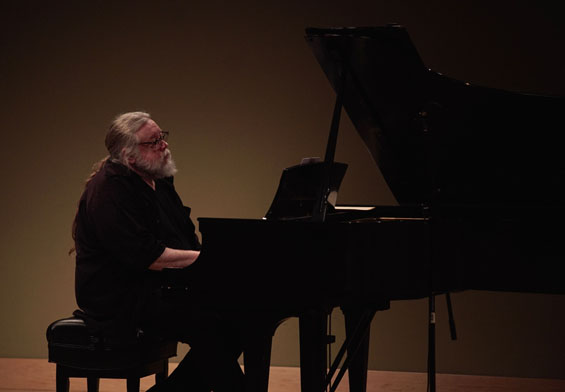
photo: Adam Borecki
FIVE QUESTIONS WITH JIM FOX
Jim Fox is not only a distinguished composer and musician but also the long-standing overseer of Cold Blue. Under his expert stewardship, the Venice, California-based label has enriched listeners for decades with music by John Luther Adams, Michael Byron, Rick Cox, Michael Jon Fink, Daniel Lentz, Peter Garland, Chas Smith, and many others, including Fox himself. Like the generally slow and lyrical music he creates, he's also unassuming, someone who always puts the music first and shies away from self-promotion and self-aggrandizement. The esteem with which he's held, however, comes through clearly in the words five composers provided when asked to comment on him and the label. textura spoke with Fox recently about the label's unusual history, its identity, and his own releases, but before we turn to that here are the testimonials his five colleagues so generously supplied.



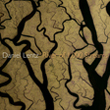
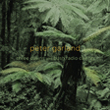
John Luther Adams: “Jim is a living musical treasure. A marvelous composer, he brings to all the music that appears on Cold Blue the same sensibility that makes his own music so exquisitely beautiful. Under his curatorial vision, Cold Blue has become the essential atlas of a distinctive musical territory created in response to the singular physical and cultural landscapes of western North America. There has never been any money in producing recordings of new music, and in these days of streaming and downloads, the economics are more problematic than ever. Yet year after year, decade after decade, Cold Blue continues to produce recordings. Quietly, without calling attention to himself, Jim does this in service to music as a living art, to the community of musicians who create it, and the listeners who want to hear it.”
Chas Smith: “Cold Blue, Jim's idea for a record label, began as a collaboration of composer friends to put their music out, and for me it still is. As fate would have it, I'm currently working on my next album, and there are times when I've been working on a piece, over and over, and it feels like I'm losing perspective. So I'll send a copy over to Jim and Michael Jon Fink to get their take on it, because I trust their ears. Cold Blue Music has always been about the music.”
Michael Byron: “Independent record labels, of which there are few, serve as a lifeline for the composers of our time. In 1980, with very little money, Jim Fox set himself the task of starting a new record company named Cold Blue. For me it was a game changer. Jim began recording composers whose music was little known and rarely heard. The result was tangible and lasting. Thinking back, I had no way of knowing that most of my recorded music would someday be found in the Cold Blue catalog. Peter Garland once said to me that some music is played and not talked about whereas other music is talked about but not played. Cold Blue has helped to bridge that dialectic. Today, with the disheartening advent of music streaming, our music is again in jeopardy of being lost in an electronic malaise of mediocrity. Few seem to care, but Jim does. With the wind blowing against him, he continues to record, produce, and distribute CDs, as he always has. The truth is that small record companies come and go; they always have. Some leave an imprint, others do not. Cold Blue has about it the quiet air of permanence.”
Daniel Lentz: “I've known Jim since the late ‘70s when he was a composition student of Barney Childs at the University of Redlands. Since 1980 I've had many recording and mix sessions with Jim and the great Scott Fraser engineering, including my last record Ending(s), which Jim produced for New World Records. Restraint, realism, and refinement are the main characteristics of Cold Blue recordings. Polished acoustics is an apt description of Jim's work, both as a composer and a record producer. He's the glue that's held Cold Blue together over the past forty-plus years.”
Peter Garland: “I'm obviously prejudiced because my music appears on his label, but he is special. First of all is his sheer survival and continuity. Cold Blue “refuses to die” in an age when streaming and shrinking distribution have forced smaller operations like it to fold and have thus contributed to a drastic impoverishment of our cultural diversity. Secondly, Cold Blue has a viewpoint—Jim's, of course—which always gives more energy and interest to a cultural endeavour rather than some bland, “open” editorial policy, which basically corresponds to no viewpoint at all. Third, Jim is an interesting and original composer in his own right and brings that composer's discriminating ear to his work as a producer. I trust him in that capacity to make decisions and often rely on him to do so for me (I have a certain limited patience sometimes for that kind of detail). Fourth, Jim is also an excellent graphic designer, so the releases are always elegant and pleasing as products. He has a design and production aesthetic (he likes to keep liner notes brief, for instance) as well as a musical one. He also treats his composers well, and scrupulously pays us royalties, even if that might be paltry! Much appreciated. I am a regular subscriber to everything Cold Blue puts out. It's the least I can do to support a person who has done so much for my music. And yes, he does turn me down from time to time! All the more reason to respect his opinions.”
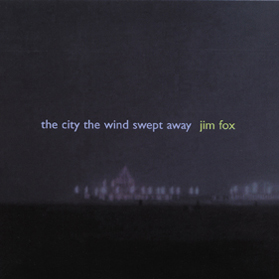
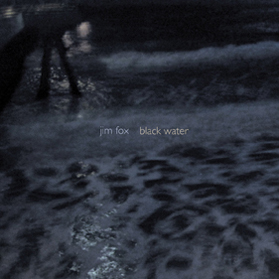
1. You founded Cold Blue in the early ‘80s and issued a number of 10-inch EPs and 12-inch vinyl albums by artists such as Daniel Lentz, Peter Garland, Michael Byron, and Michael Jon Fink (many of them still releasing music on the label), but, according to info at the Cold Blue site, it experienced “demise a few years later” and was then resurrected in 2000 after a fifteen-year hiatus. What prompted you to establish the label in the first place, what was the reason for the initial shut-down, and what compelled you to revive it?
JF: Why I started Cold Blue is not particularly clear anymore. I suppose it seemed like the right thing to do. However, I had little money at the time (I worked then as a bookstore clerk), so I soon found myself on a diet of Top Ramen (a brand of Japanese-made noodles and broth that sold for pennies a package). My Cold Blue goal was simple: release music that I enjoyed that wasn't otherwise getting to a broad listenership. By happenstance, this turned out to be primarily music from the West Coast (where I'd lived since the mid-‘70s), music by composers who were perhaps loosely united by a common interest in music's basic sensuality.
Cold Blue wasn't planned as the home for a “school” of composers, but critics quickly dubbed it as such. And who am I to refuse a handy moniker? (“[Cold Blue] is an invaluable resource for what might be called part of the new ‘California School'… a label with a particular viewpoint and consummate good taste,” wrote Joan La Barbara in High Fidelity/Musical America. “The [Cold Blue] label defines a certain ‘Southern California sound,' uncluttered, evocative and unusual, with a wistful emotional edge,” wrote an LA Weekly critic.)
My founding of Cold Blue was about blundering forward with good ideas and intentions. I had taught university-level electronic music so had a working knowledge of the electronics of sound reproduction. Business sense seemed like something I could pick up along the way. (Yet it apparently eludes me to this day.) I knew almost nothing about making records, but I certainly recalled once visiting a large RCA pressing plant on a Cub Scout outing. Stampedin' stampers—it was the loudest thing I'd heard at that tender age! (It must've been the place in Hades to which noisy neighbours were condemned. The stench of melting vinyl heightened its hellish nature.)
In answer to the second part of your question: around 1985, both of my primary distributors went bankrupt. Without distribution, Cold Blue closed its doors too, just as CDs were emerging. By the way, I was to be one of the last among my friends to get a CD player. I found the early commercial CDs, circa the mid-'80s, to be harsh-sounding, uninviting. But after a few years, the people mastering CDs, as well as the people designing the digital-to-analog converters (DACs) and output amps and filters on players, seemed to get the hang of it, and a beautiful sound became available on CD.
And for the last part of your question, why did I restart Cold Blue in December 2000? (God knows, I hadn't gained wealth to squander in the interim.) A new music label arranged to release some of my music, but its contract was absurdly unfriendly to the composer. It actually had a de-escalator clause—the more you sold, the lower your royalty percentage became! It wasn't the money that mattered. I expected royalties amounting to only pennies—if that. It was the principle of the thing.
So, in a fit of high-road-mindedness, I asked some composers if they'd be interested in having their music issued on a new Cold Blue, a reincarnation-plus, based around new releases and friendly contracts. Everyone I spoke with was delighted by the idea. So off I blundered again, hoping—and succeeding, if I do say so myself—to make and release high-quality recordings of music I personally enjoy. And, I should note, I believe in putting out music that is affordable, not expensive limited editions. This is important to me, and I'll tell you why.
I primarily learned about music, particularly “new music” (both classical-based and jazz-based), by listening to recordings, because the small city I grew up in, Indianapolis (“Crossroads of America” according to the mayor's office, but appropriately dubbed “Naptown” by touring jazz musicians of the 1940s and '50s), just didn't have a new music scene for live performances in the late '60s when I was in high school and growing a passion for new music. Therefore, I haunted record store bins for the odd and unusual, grabbing whatever I could find. That also led me to an awareness of record labels, which, in the late '60s would've included Impulse!, ESP, Mainstream, Odyssey, Nonesuch, Advance, Actuel, Shandar, Delmark, and many others.
Record shopping and seeking The New became much the same activity for me. At some point in my teens, I sprouted eclectic ears that begged, “Astonish us! Surprise us! Revolt us! Tickle us!” Also around this time the idea that music might be more than life's background noise crept into my consciousness, along with an interest in writing music. Soon, I became deeply interested in the work of living composers. (Seeking one's own voice can involve the urge to engage in a “dialogue”—even through recordings—with one's contemporaries.) As I noted earlier, very little music by the living found its way to Indy's stages at that time and few contemporary scores and recordings found their way to its libraries. So I haunted record shops to find The New (which more than once was a mis-shipped LP that a shop was unable to return).
2. Many writers have tried to capture the Cold Blue identity in words, with some describing it as ‘West Coast post-minimalism' or referring to its penchant for a particular kind of ‘California Sound'; another astutely noted that Cold Blue's identity is as clearly defined as ECM's. As reductive as doing so might be, how would you put the label identity into words? If identifying qualities common to its releases captures the label character more effectively than a definition, what would some of those qualities be?
JF: I don't have a good, succinct way of putting a “label identity” for Cold Blue into words. Nor do I think that sort of thing is of much value, though I suppose it would be handy, because I've often been asked this (or a similar) question.
You ask about common qualities. This, like label identity, is difficult for me to express—and I would hope many Cold Blue releases simply thwart or contradict anything I might say in this regard. I hope they are, when viewed as a whole, genre-defying or uncategorizable. But, here goes. A common quality one perhaps might find/hear if listening to the whole catalog is the direct, straightforward expression of musical ideas. Also, though not in conflict with the aforementioned straightforwardness, I think there is a sense of mystery, of clouds on the horizon, and perhaps even of unease or uncertainty hovering around many Cold Blue releases. I also like to think that there is, in a broad sense, a discernible spirit of ecstasy (often a quiet or understated ecstasy) running through most of Cold Blue's offerings.
I tend to like music that leans for much of its character or personality on colour and texture (not that these are necessarily two separate musical elements). I also like music that has subtle surprises in it—surprises in note choices, surprises in instrumentation, surprises in shape, etc.
Lastly, I should say that I don't start out wondering how any given music that comes before me might embrace or fail to embrace the perhaps vaguely common qualities I've just mentioned. I most certainly don't ever start out thinking about how music might or might not fulfill certain pigeonholes. And I hope I'm always looking for something that doesn't obviously fit too snugly with the other music on the label yet at the same time feels like just the very right next thing to release.
Inevitably, there will be a common voice or through-line, simply because I personally curate the music. Yet it's my hope that when one contemplates picking up a new Cold Blue release there might be some sense of mystery (yes, that word again) about what the music might be.
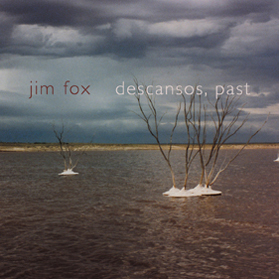
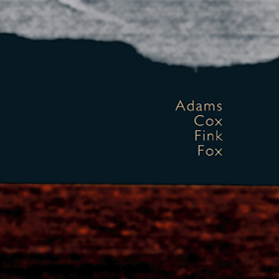
3. How ‘hands-on' are you with respect to the music created and recorded for the label releases? Are you involved from the start of a composer's project or do you defer to the artist and limit yourself to the later stages of physical production and marketing? How do you determine whether a new artist will be a good fit for the label, and how have you managed to keep the artist roster intact for so many years?
JF: I'm usually very hands-on, as hands-on as geography and time and money allow me to be.
From the onset of a project, my involvement includes approaching a composer for music or choosing from among things a composer may offer to me—as scores or a rough live performance that gets across a piece's idea, or even (though I generally dislike or simply don't trust them) MIDI mockups. On occasion I've suggested that a composer might write something for a particular ensemble, a particular instrumentation. Once music is selected for a recording project (a joint decision by the composer and me), choosing an order—the sequence—of pieces on an album is very important. Arriving at a strong album flow from beginning to end sometimes even requires, sadly, the jettisoning of an otherwise good piece that might in one way or another impede that flow; this may be because that piece is of a jarringly different musical style or uses a non-simpatico/different instrumentation from the album's primary work.
In an ideal situation, I choose the performers and go into the studio with them. But economics and other factors do not always allow me to do that. I can't generally fly about to work with performers (particularly distant performers for whom a work might've been written or are good friends of the composer or are simply best suited to give the best recording of a piece), so sometimes I have to rely on getting recordings from sessions that I can't attend. At the same time, I sometimes can afford to get an out of-town composer and/or out-of-town performers out here, to a studio that I like a lot and is affordable for me, and with an engineer I trust. On the subject of engineers, let me loudly sing the praises of my favourite LA engineer, Scott Fraser, with whom I've worked for twenty years. He has very, very good ears and generally gets what I'm trying to do with a piece. He has been involved to one degree or another (from engineering the original recording to mastering the CD) with most of the Cold Blue albums created since the label's revival.
I also design all (well, there have been a half-dozen exceptions) the cover art and work out with the composers what is absolutely needed in terms of liner notes. I tend to go for very spare notes or no notes at all because I usually want the listener to approach the music with unprepped ears—to just hear it—and I've found that, as interesting as liner notes can be, they often influence one's ears, the way one hears a piece. (As it happens, my Cold Blue design work has led unexpectedly to my doing a few designs for other labels each year.)
For better or worse (I mention the latter because I'm no master of hype), I also write the press releases and website descriptions of the music. (I wish I were a bit better at this than I am —it's eerie how often the exact words one uses to describe an album in a press release will come back to haunt that album's reviews.)
Addressing the penultimate part of your question: in terms of artists, it's not so much a matter of “fit” as it is simply whether I am in some fashion moved or intrigued by the particular music someone submits or that I may hear on a concert (and may approach a composer about). This may sound trivial, but I also try to determine if a composer I'm contemplating working with is a nice person; I just don't have the wherewithal to work with someone who seems to be using me. Life's too short and art too much fun to be spending one's time fighting with people.
And lastly, I tend to keep artists because I tend to develop a friendship with most of them. Furthermore, I try to be scrupulously honest. (I recently had a composer tell me that of the numerous labels he's had music released on, Cold Blue was the only one that bothered to pay him his royalties. Even though it wasn't much cash, he appreciated that I paid him.)
4. Many words come to mind when I think of Cold Blue, but foremost among them is integrity. The releases never pander, nor do they compromise on the vision you've long established, and the production, music, and presentation are always of the highest calibre. Has it been easy or difficult to sustain the label since its resurrection without wavering from the vision you established for it? And is managing and maintaining the label different in 2021 compared to, say, when you re-started it in 2000 (and if so how)?
JF: “Integrity” is a description I'll accept—thank you. “Sensual” (as in entertaining the senses as a primary goal) and “ecstatic” (albeit in an often quiet way) are words I sometimes use, when pressed for such descriptors.
I suspect it's always difficult to sustain a label: There are inevitable money problems—all labels face 'em. There are evolving audiences—sometimes evolving toward what one is doing, sometimes evolving away from it.
Things are quite different now when compared to Cold Blue's 2000 restart (and of course very different from the early-'80s initial incarnation of the label). Today's emphasis on digital track delivery is beginning to make the very concept of an album—by which I mean an ordered presentation of music, carefully sequenced, with carefully determined pauses between tracks and carefully determined relative volumes for each track—difficult to hang on to. This same sort of care in the sequencing of tracks carries over to, and perhaps partially stems from, the way one puts together a live concert, which is something I've been doing with some regularity since the mid-/late ‘70s. (And during the times when Cold Blue has been active, the live concerts I've produced have often taken the form of Cold Blue events, presenting new and recent music from the label.)
Also, radio stations—and the programs they offer—seem to be, in one aspect or another, waning. And, at the same time, a new crop of radio (or streamed programs) seems to cram tracks together, sometimes overlapping them—capriciously fading one into the next—often without any announced mention of what one has heard or will hear. I understand the creative impulse behind such shows, their sometimes wonderfully kaleidoscopic collage concept, but they do tend to sacrifice a listener's learning about what is being played.
And don't get me started on the lo-fi quality of mp3s and the demise of the full-range stereo system.
Maybe the return of vinyl will rejuvenate the album concept. (And maybe even the idea of having a full-range stereo system on which to listen to music.) But I'm probably not going to venture back into vinyl and the different shipping problems it presents. For the past eight or ten years my CDs have been in all-cardboard packaging (usually six-panel wallets), and that makes for light, easy storage and fairly inexpensive shipping. And that, again, plays into my desire to offer inexpensive recordings, something that teens and young artists and anyone who isn't particularly wealthy can afford. For this same reason I'm leery of the recent trend toward expensive, limited-edition vinyl.
I shouldn't leave the topic of maintaining a label without at least touching on distribution—which can be a very bumpy road. (Earlier I mentioned my distribution problems in the 1980s.) As for Cold Blue's distribution disasters since 2000, around eight years ago my US distributor for the previous dozen years suddenly shut its doors without warning and declared bankruptcy. A couple years before that, the label's British distributor went bankrupt, and a few years prior to that my German distributor just disappeared. (In each of these instances money and/or inventory was lost. In the US and UK, replacement distributors were fairly quickly found.)
5. Some of my favourite Cold Blue releases are the ones by you, yet they've been modest in number; further to that, of the four released, three are EP-length. Why have you not released more of your music on the label, and when might we expect to see Blue Photographs, the forthcoming full-length by you, appear? Aside from the details included at the label's site, that it features piano pieces written during the past thirty years and performed by you, what else can you tell us about the recording?
JF: Thank you. I appreciate that.
In addition to the three singles (The City the Wind Swept Away, Descansos, past, Black Water) and the full-length that you mention, I have a few short pieces scattered across some of Cold Blue's anthologies, such as Between the Wheels, a piece I'm quite fond of, for bass clarinet and string quartet, on the album Adams Cox Fink Fox (CB0009), Among Simple Shadows (featuring Marty Walker's bass clarinet and Wadada Leo Smith's trumpet), on the Dancing on Water CD (CB0005), and Colorless sky became fog (featuring hammered dulcimer, an instrument that I've come to like quite a bit and hope to use on some future pieces) on Cold Blue Two (CB0036) and also on The Wire's Wire Tapper 33.
On other labels, I had The pleasure of being lost (2011/12), a piece for prerecorded material and piano (with a text derived from Joseph Dalton Hooker's 1854 Himalayan Journals), come out on the Innova label some years back, and I'm recording a string ensemble piece this winter for New World Records, for release in spring of 2022.
Blue Photographs has been in the pipeline for a long time. It's a project made up of a selection of many short piano pieces—often incidental music penned for a friend's birthday or just for no reason whatsoever—that were composed during the past forty years. Whenever I decide I should put these into shape to record, I end up getting bogged down in them, changing my mind about which to include and even indulging myself in slightly revising/rewriting some of them to reflect my more current musical tastes. So it seems like a project that I'm ever starting, stopping, starting again… Someday!
Website: COLD BLUE
June 2021